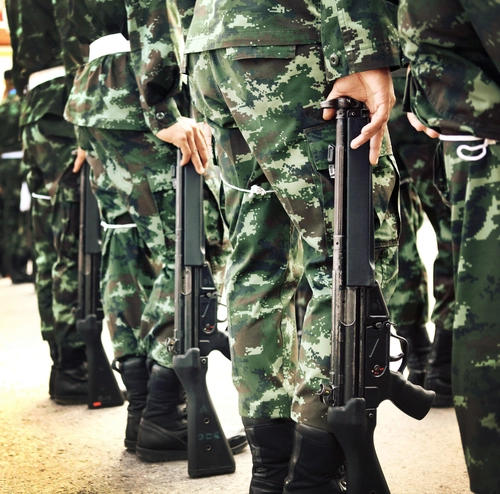1. Select a discrete app icon.

notes
Not Above the Law
What a police department’s domestic violence policy can tell you
- Jun 15, 2016

Abusers understand power and control. And when the abuser is a police officer, those power and control tactics, along with training and privileges afforded to law enforcement, can make an already difficult situation substantially worse.
Think about it: Call the police? He is the police. Go to a shelter? He knows where the shelter is located. Have him arrested? His fellow officers might play favorites. Take him to court? It’s your word against an officer’s and he knows the system.
These are just a couple of the concerns faced by survivors of officer-involved domestic violence (OIDV). Add in that an officer can legally carry a firearm, and it becomes clear how challenging this situation can be.
In navigating OIDV, it can help to understand the culture of the offending officer’s police department. A few things to consider:
1. Does the department acknowledge the problem?
Domestic violence is reported to be up to four times more common among police officers than the general public, the National Center for Women and Policing reports. One way to know that a local police department acknowledges OIDV is that a policy is in place spelling out the consequences an officer might face if involved in domestic violence.
When Jan Russell, JD, was developing a domestic violence program at the Chicago Police Department to provide services to survivors who were abused by members of the department in the early 1990s, she faced an uphill battle.
Some were afraid that starting the program would make it look like there were a lot of incidents of domestic violence within the department.
“No,” she argued. “It would look like we were doing something about it.”
2. Is the policy embraced and enforced?
A police department might use a model policy as a template, then simply slide it into a manual. But this isn’t enough, says Russell, who worked for the Chicago Police Department for 16 years and today is a senior policy counsel for the Cook County Sheriff's Office, where she works on policy issues related to domestic violence, sexual assault and the Prison Rape Elimination Act.
To shift the culture of a department, there needs to be ongoing conversation and training around the OIDV policy.
“You have to be active in getting the message out,” she says. Officers may be called in on a case that involves a colleague, for example. They need to know the department’s policy and be able to act accordingly. They need to know the consequences of their own actions should they elect not act in accordance with the policy. They need to be aware of the risks to survivors as well as any consequence to their own jobs should they fail to report domestic violence or arrest a fellow officer.“
A police department’s OIDV policy should include such points as:
- Pre-hire screening for violent history and tendencies and exclusion of offender candidates
- Post-hire and annual ongoing domestic violence policy and awareness training, and introduction of the policy to an officer’s domestic partner
- Early intervention policies that require officers to report aggressiveness, violence or work performance warning signs among fellow officers
- Incident communications that make the highest level of command aware of any reports of violence, whether suspected or actual
- Requirement that dispatchers report any OIDV and that officer’s create and file incident reports of any OIDV regardless of whether a criminal act has occurred or not
- Disciplinary and criminal charge protocol for officers who are involved in OIDV, who do not report acts of violence or who interfere with investigations or coerce victims
- Incident response protocols that require on scene supervisor involvement and reports to the prosecutor’s office for direction from a third-party on handling the case
- Victim safety and protection procedures.
3. What is the policy’s goal?
Some policies are aimed only at punishing an officer, while others are focused on behavior change, preventing domestic violence and protecting survivors. A lot of police departments advocate firing a police officer who is accused of or charged with domestic violence. With 34 years of experience working with domestic violence issues, Russell’s position is more nuanced. In Chicago, she focused on keeping survivors safe.
“When you say you’re going to fire officers, that could prevent victims from coming forward,” she says, noting that in her experience most survivors don’t want their partners fired. Russell advocates using the power the department has over the abuser’s job to force the abuser to change behavior.
“The department loses that power if the abuser is fired and the abuser has no motivation to change,” she explains. Using the power over the abuser’s job worked, she notes, as long as the department was aware of the abuse and the survivor was willing to report future incidents.
The Chicago program seeks to make sure each case was investigated and handled individually. Moreover, it works with survivors who are concerned about situations before they become violent, intervening at the early signs of power and control.
What Can You Do?
If your abuser is in law enforcement, you don’t have to remain silent. Russell recommends working with a domestic violence program that can be your advocate with the department. An advocate can help learn whether the department has a policy, what it looks like and how it’s enforced.
If the abuser has a position of power within the department, Russell advises asking your advocate to find out if he or she is someone for whom other officers might ignore the policy.
You can find resources to help you by searching on this site, and review this additional advice for things you can do when your abuser is an officer.
Looking for someone to speak with? Enter your location to find phone numbers for domestic violence experts in your area.
Have a question about domestic violence? Type your question below to find answers.








